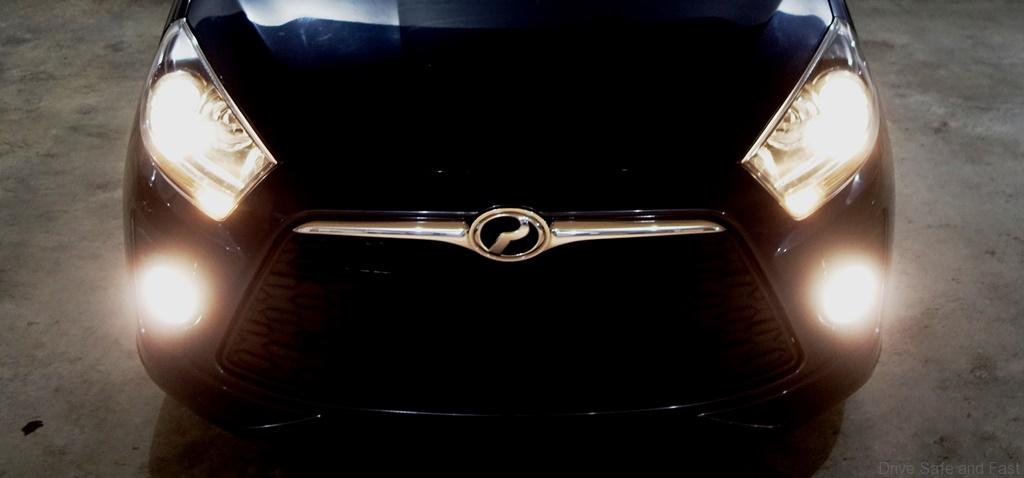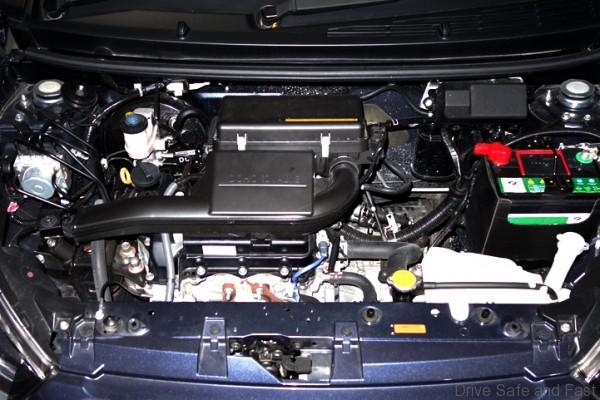The 2014 Axia came as a very well-received replacement for the aging Viva, which was starting to get on in years. Like the Viva and all other Perodua offerings, the Axia is based on an existing Daihatsu-Toyota model, and it’s a very nice upgrade from its predecessors, with enough space for four large adult occupants to sit in comfort. All Axia models from the Standard to the Advance come with the same Toyota-sourced 1-KR-DE engine.
The 1-litre petrol powerplant in the Axia mirrors the car’s emphasis on weight and space efficiency. It uses a plastic-resin cylinder head and bundles its oxygen sensor and catalytic converter into the exhaust manifold to achieve this goal. Although it’s a three-cylinder without variable valve timing, it’s still got 2 exhaust and 2 intake valves per cylinder and it does a very respectable job of pushing the car around at the mid-range.
Because of the car’s low kerb weight of 850 kilogrammes, it’s not difficult at all to get to highway speeds and to keep it there. It’s delightful that Perodua has kept a manual transmission option even on the mid-spec SE in an age (and country) where the third pedal seems to be going the way of the floppy disk. The best part is the 5-speed manual transmission actually feels usable. The clutch is light enough that it never became a bother during traffic jams.
The Axia SE is the mid-tier offering of Perodua’s current cheapest car, which means it comes with more than just the bare necessities. As opposed to the standard model, the SE comes with a few functional extras. The media player here has a few more playback options over the CD-Radio unit in the Standard G trim. This includes USB, Bluetooth and MP3/WMA capability. Mind you, without a touchscreen interface, you will need to read the manual to figure out how to pair your phone to the car.
Inside you also get some nice semi-bucket front seats covered in snazzy fabric. The cloth material also covers part of the door, giving it some nice soft-touch points. The car also features an Anti snatch hook, a prime example of how to create-locally relevant accessories. It’s a useful addition but taller folk might find their elbows pulverised if not careful when reaching for something in the back seat. The front corner sensors will come extremely handy for new drivers who struggle with estimating gaps, and work really well with the retractable side mirrors to increase the car’s manoeuvrability despite the increase in width over the outgoing Viva. Unlike the front corner sensors on the new Myvi, these cannot be disabled. So be prepared for incessant when passers-by or cyclists move too close.
The SE’s exterior gets an upgrade too. Oversized, trapezoidal front grilles are all the rage nowadays and Perodua has caved to the trend, using it to distinguish the lower and upper trim levels for both its Myvi and Axia models. What I really liked were the inclusion of projectors headlamps and fog lights. These are absolute rarities and are often missing even on cars three times the Axia SE’s price. They really do a great job at bolstering the car’s sporty look, as does the clear lens on the rear light units.
One of the more substantial improvements on the SE in terms of safety is the new braking system. ABS, for instance, helps drivers retain steering control during heavy braking while Electronic Brakeforce Distribution and Brake Assist are extremely effective in collision prevention. The Axia comes with 2 airbags as standard, and considering the fact that the more expensive Advance model is more of an upgrade in terms of the car’s media capabilities and finish, the SE seems to offer the most car-for-ringgit.
That brings me to the real appeal of the Axia SE, its comparative value. The base model is the cheapest car you can buy in Malaysia, but it lacks some of the aforementioned, arguably essential, safety and comfort features. For just over RM36000 (about RM10,000 more than the base model), you get a capable media player and a decent brake package, which is a pretty sweet deal.
I had an opportunity to see what the car felt like during a long-haul journey in an Axia owned by a friend of mine just before posting this review and I’m happy to report that it did the job pretty well. Performance was its most surprising strong point, with the car being able to deliver over-taking power when necessary. Don’t expect much in the way of comfort from this city car – it can do highway journeys safely, but expect to take frequent rest stops.
When it rains though, that’s when you really have to be careful, because this car does such a good job of masking its size with its quality interior and tall dashboard, you actually forget how small its footprint and wheelbase really is. Yes, it ticks all the boxes and makes such good use of its space that I managed to fit a metric roomful of things in, but the Axia is still is a small city slicker. It’s a tremendous leap forward over the Kancil and Viva, but it still needs to be treated like the car it is, not the larger car it aspires to be. And that’s not so bad, considering what a great little car it is, even when compared its bigger brother.
PERODUA AXIA SE (M) Specifications
Engine 3-Cylinder, 12 Valve
Displacement 998cc
Transmission 5-Speed Manual / 4-Speed Automatic
Max Power 66Ps @ 6000 RPM
Max Torque 90Nm @ 3600 RPM
Fuel Tank Capacity 33L












